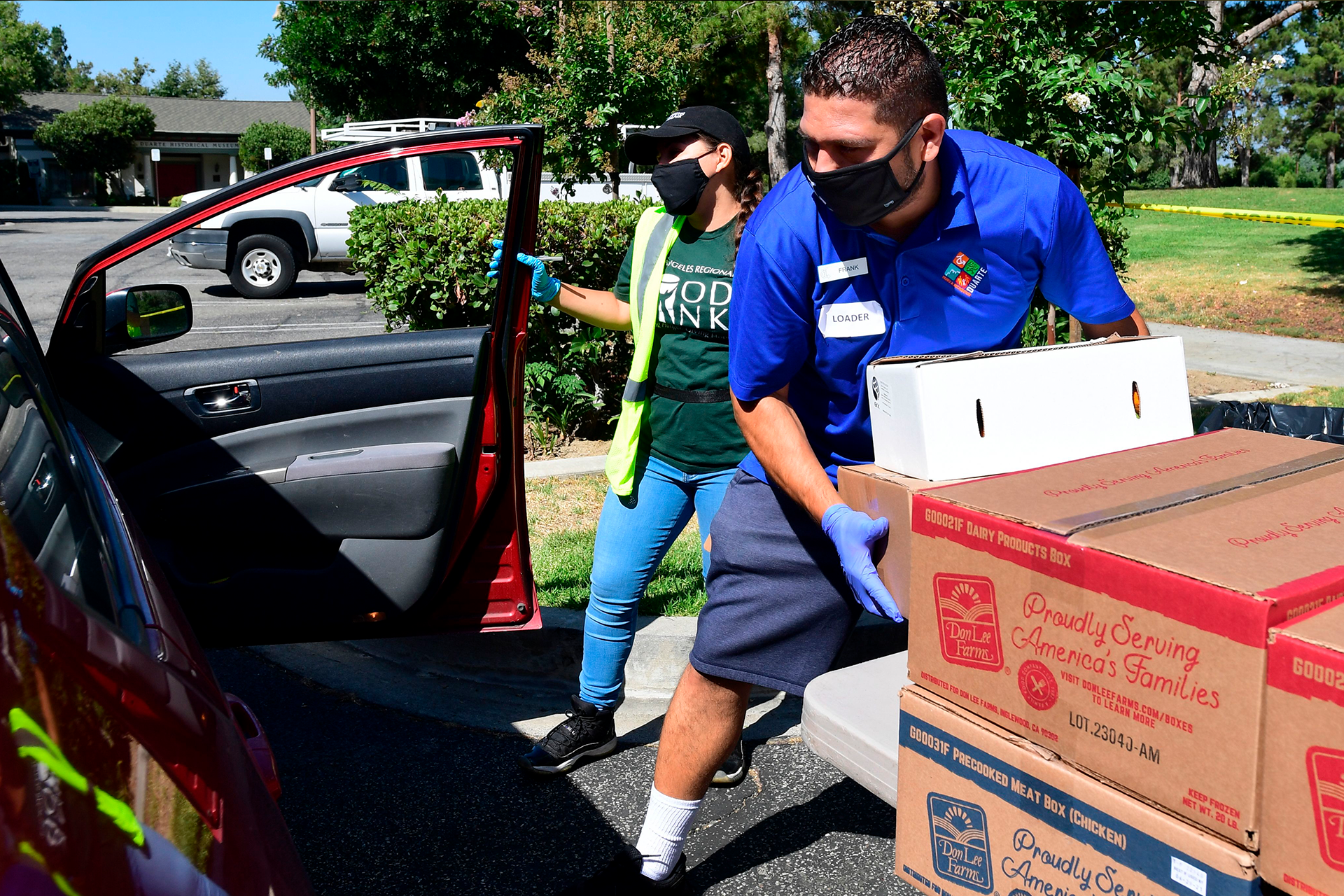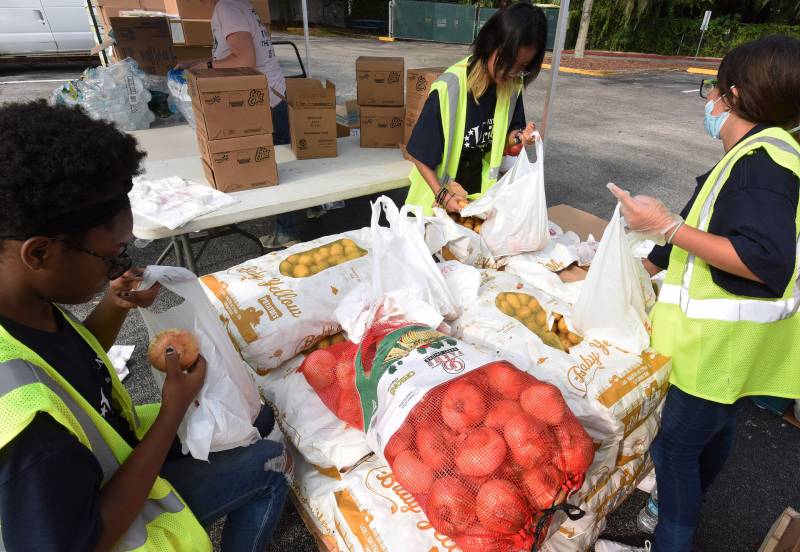Around the holidays, many folks’ thoughts turn to food banks.
This can be because people particularly need the services that food banks provide at this time of year. It can also stem from a personal desire to donate money or time to these organizations. For some people, it’s about both.
When people can’t buy the food they need, that’s known as food insecurity. And for many individuals and families, food banks offer a crucial lifeline, offering free food.
Keep reading for where to find your local food bank, how demand for these organizations has persisted through the COVID pandemic, and how best to support a food bank near you.
Jump to:
Demand for food banks rose during the pandemic — and has stayed that way
In 2020, San José’s Second Harvest of Silicon Valley had “literally doubled the amount of food we’re distributing” from before the COVID outbreak, CEO Leslie Bacho told KQED Forum in 2020 — and demand was already high.
“We are seeing so many people who are already just living on the edge, having to then burn through their savings,” Bacho said in that 2020 interview. “More than half the people we’re serving now have never sought food assistance before.”
An ongoing housing crisis, continuing gentrification, high cost of living and inflation hitting food prices means Bay Area residents continue to be particularly vulnerable to food insecurity as 2022 draws to a close. But what’s happening here continues to be felt nationwide: According to the most recent numbers from the Department of Agriculture’s Economic Research Service, in 2021 more than 33 million people across the United States were food insecure. And as NPR has reported, “No community is spared, with rural areas, families with children and communities of color disproportionately affected.”
“Coming out of the height of the pandemic with inflation being as sustained and high as it is, it’s a hard time for many families,” Radha Muthiah, CEO of Washington, D.C.’s Capital Area Food Bank, told NPR recently.
Michael Altfest, community engagement and marketing director at the Alameda County Community Food Bank, said that the need for his organization’s services has only risen in 2023. Thirty percent of the calls made to the Alameda County Community Food Bank emergency food line are still coming from first-time callers, he said.
“Since 2021, it’s been a pretty sustained need,” said Altfest. “We’re serving far more people now than we were in 2020, and we continue to see new people regularly.”

How can you help your local food bank?
Donating money might be better than donating food
Altfest said that “the best thing anybody can do to support our food bank or any food bank right now is financial donations.” The same inflation that’s making it harder for people to afford food is also affecting the ability of food banks to purchase supplies to serve their clients.
Around 60% of the Alameda County Community Food Bank’s funding comes just from the holiday season, said Altfest. But the need for food banks isn’t confined to the holidays. He explains that “hunger is a 365-day-a-year problem,” and that food banks still need support all throughout the year.
Donating money might also be more effective than donating food in helping your local food bank acquire and bring food to those it serves: When the pandemic hit in 2020, it changed the way many food banks solicit and accept food donations due to the risks of spreading COVID — and you still might not see as many food drive collection barrels in stores these days.
Donating money rather than food gives food banks far more flexibility. Second Harvest in San José, for example, is able to negotiate special deals for the food it buys “by the truckload” — at a “much better value than you could get if you went to Costco or Safeway,” as Second Harvest’s Leslie Bacho told KQED in 2020.
Put simply, food banks know how to make your cash go a long way when it comes to buying food — almost certainly further than if you donated food yourself.
Donate your time
If you don’t need the services of a food bank right now, and you have time to spare, you might consider volunteering at a local food bank.
Altfest said that while volunteers are critical, it’s common that their shifts are mostly filled over the holidays. But after January 1, it’s a different story.
If you’re considering taking on a volunteer shift, Altfest said that January and February are important times to consider — and maybe even more impactful — because a lot of support peters out after the holidays end. That’s when you could be needed most.
If you’re planning on volunteering at a food bank this holiday season or beyond, check for any COVID vaccination requirements but also still expect potential rules including wearing face coverings and gloves, and maintaining social distance. If you’re nervous about volunteering in person during the ongoing pandemic, speak with someone at the food bank you’re thinking of supporting and ask them about their COVID safety procedures.
Give back in a way that connects with you
Altfest said that it’s also crucial that volunteers support food banks in a way that fosters community.
“We are always encouraging people to support us in the ways that are most meaningful to them,” he said. “Added to that individual direct support — like making a donation, putting food in a food drive barrel, coming in — volunteering is sharing what you’re doing, and what the impact is with other people.”
“It’s our intent to get as many people in this community involved in our work in as many ways,” said Altfest.
How to sign up to help
The quickest way to offer your support is by visiting your local food bank’s website and signing up there to volunteer or make a donation.

